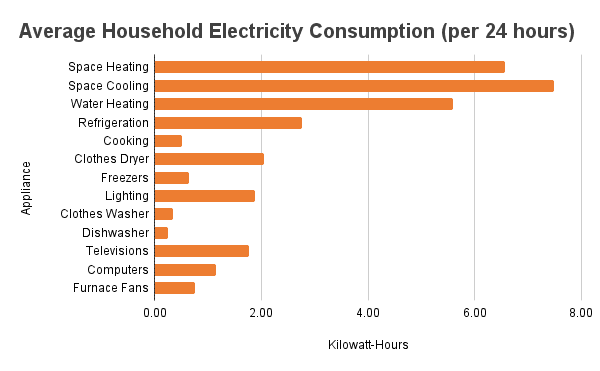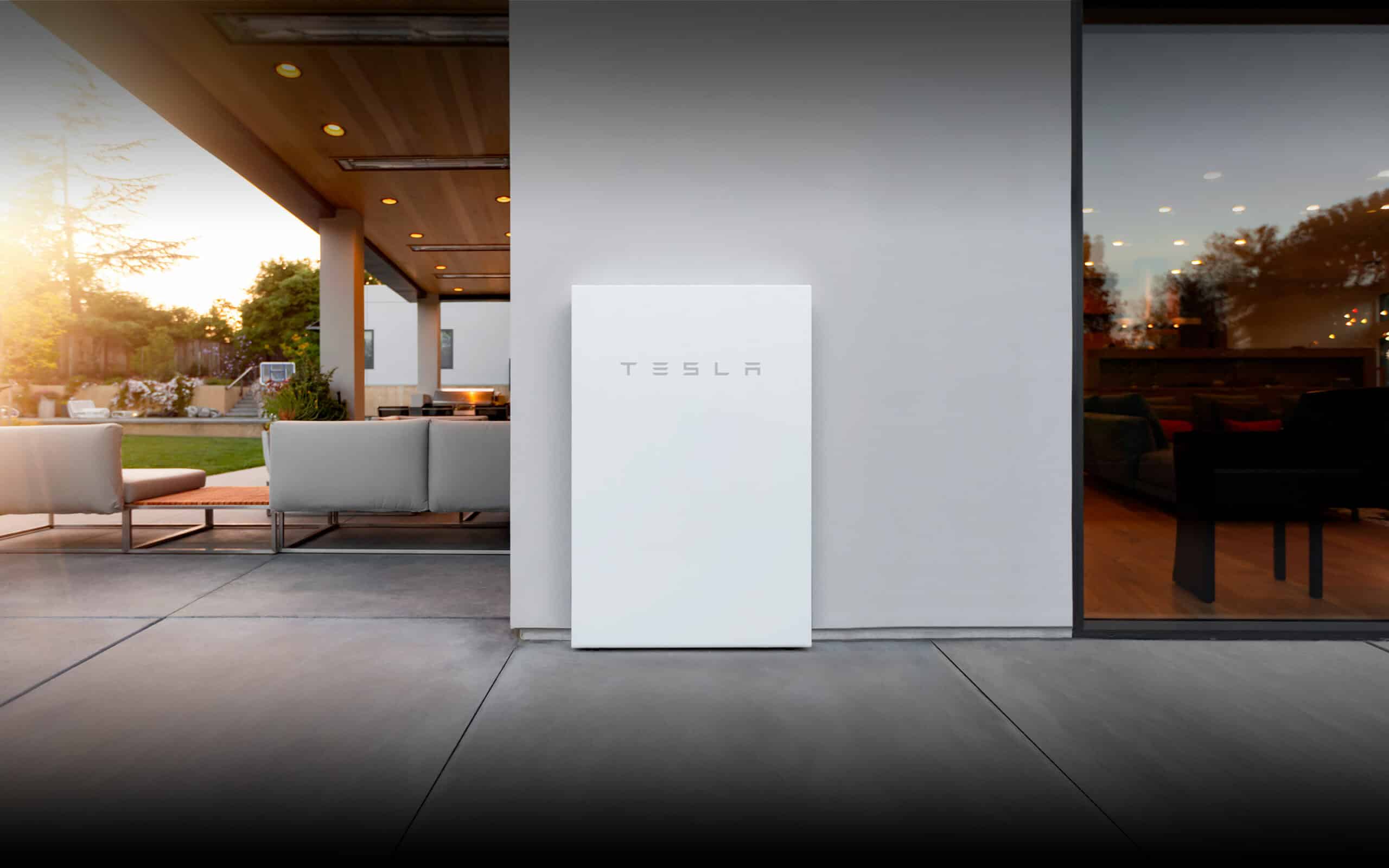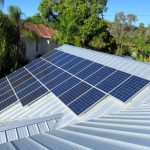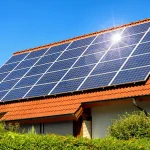At Region Solar + Electric, we are dedicated to equipping our customers with the expertise they need to make the most of their Tesla Powerwall during power outages. Our goal is not only to provide seamless installation but also to empower you with knowledge about energy consumption. Backup batteries can sometimes feel like a complex puzzle, but we are here to demystify the process and ensure that the Powerwall works effortlessly for you.
How Long Does The Tesla Powerwall Last In The Event Of A Power Outage?
The duration of the Tesla Powerwall during an outage depends on several factors, including the size of the battery, the energy usage of the household, and the conservation efforts of the user. By actively conserving energy, such as turning off non-essential appliances and optimizing energy consumption, the backup battery can potentially last even longer, up to four times more than regular appliance usage.
It’s important to note that the actual duration of the backup battery during an outage cannot be guaranteed or specified in hours. This is because each household has its own unique energy consumption patterns and setup, which will impact the overall performance and longevity of the Powerwall.
What Is The Energy Capacity Of The Tesla Powerwall?
The Tesla Powerwall has an energy capacity of 13.5 kilowatt hours (kWh). However, it’s important to note that the Powerwall has a limited capacity and duration. The duration of power supply during an outage depends on how you utilize the limited capacity.
When the backup battery is depleted, it will shut down and attempt to recharge. The Powerwall system is designed to detect outages and automatically recharge using solar panels, provided that weather conditions are favorable. However, if the panels are obstructed by snow or debris, recharging the Powerwall will not be possible.
To ensure you are prepared for potential outages, the Tesla Powerwall app monitors severe storms in your area and sends you alerts 24/7. The app also tracks the efficiency of your solar panels in harnessing sunlight for the Powerwall, ensuring your home remains powered during extended outages. Additionally, it notifies you when the stored energy reaches 10% capacity and enters standby mode.
What Does “Whole Home Backup” Mean For A Tesla Powerwall?
With whole home backup, all your 120 and 240 voltage appliances are connected to the Powerwall through a single circuit. In the event of an outage, it is necessary for the user to manually shut off the 240 voltage appliances to conserve power.
If heavy loads remain connected to the Powerwall, it will deplete the energy reserve faster compared to a partial home backup where such loads are automatically shut off. It is crucial for Powerwall users who choose whole home backup to understand that it does not grant the ability to operate the entire home at full capacity. During an outage, reliance on critical loads becomes necessary.
Appliances That Can Be Powered By A Tesla Powerwall During A Power Outage
During a power outage, you can rely on your Tesla Powerwall to power essential appliances. To make the most of its 13.5 kWh capacity, it is crucial to prioritize critical loads and minimize heavy usage that may drain the system quickly.
The Powerwall supports 120-volt appliances, including plug-in items, light bulbs, ceiling fans, refrigerators, small kitchen appliances (such as microwaves and toasters), televisions, computers, and small handheld devices. By using only these small-load appliances when necessary, you can maximize the efficiency of your Powerwall and keep it running smoothly.

The information provided above is derived from the average energy consumption rate of American households in 2021, as reported by the U.S. Energy Information Administration. It is important to note that each home’s energy usage may vary due to factors such as usage patterns, location, and types of appliances. Therefore, this data should be considered as a general guideline and does not guarantee that your home will consume the exact same amount of kilowatt-hours.
Appliances To Limit Or Avoid Using During Power Outages
During a power outage, it is crucial to know which appliances to limit or avoid in order to maintain power in your home. Heavy load appliances that operate at 240 voltage, such as ovens or ranges, clothes dryers, electric water heaters and furnaces, electric vehicle chargers, and HVAC systems that struggle to maintain temperatures (i.e., below 78°F in summer and above 68°F in winter), should be avoided or limited.
The most significant benefit can be gained by turning off the HVAC system. Instead, consider using ceiling fans or plug-in heaters, which consume less energy while effectively regulating the temperature. By being mindful of your appliance usage, you can ensure a longer-lasting power supply and greater comfort during a power outage.
How to Maximize the Efficiency of Your Tesla Powerwall During a Power Outage
- Ensure efficient energy usage by turning off the HVAC system and electric furnace. Consider using ceiling fans or plug-in heaters to regulate temperatures effectively.
- Unplug nonessential electronic devices, such as video game consoles, televisions, Wi-Fi devices, and stereos.
- When not in use, disconnect countertop appliances like microwaves, coffee makers, blenders, and toasters.
- Avoid using electric ovens or ranges for cooking. Keep nonperishable food items on hand that do not require cooking or can be prepared using the small countertop appliances mentioned in step 3.
- Minimize the use of hot showers, laundry machines, clothes dryers, and dishwashers, as they can quickly drain your Powerwall due to the high energy consumption of electric heating units.
- Charge your electric vehicle before a potential outage to ensure it is ready for emergency situations that may require you to drive.
- During the summer, turn off your pool pumps to conserve energy. However, in freezing conditions during the winter, it is advisable to leave the pool pump on to prevent potential pipe freezing concerns.
To maximize electricity savings during a power outage, it is recommended to optimize the usage of appliances in your home, preventing your Powerwall from depleting energy too quickly. Here are some methods to conserve energy effectively:
- Transition to energy-efficient LED light bulbs.
- Upgrade to a high-efficiency HVAC system.
- Enhance insulation by replacing windows with double-pane glass.
- Utilize smart kitchen appliances and a programmable thermostat that adjusts based on outdoor temperatures.
Implementing these changes gradually will reduce your overall energy consumption and ensure your home remains protected during outages. This approach allows the Powerwall to operate more efficiently without unnecessary strain.





